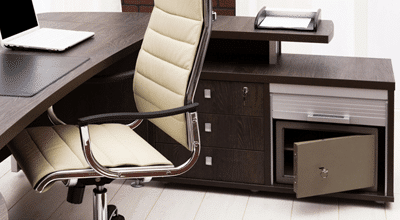
Common Mistakes in Hiding a Home Safe – and Our Top Solution
[gap] [section bg_color=”rgb(40, 40, 40)” dark=”true”]According to the FBI, the average burglary lasts 8-12 minutes.
Preventing significant loss requires that your home safe be kept secret during that time.
[/section]Where does a burglar look?
Many places we think are safe, might not be at all…
[row] [col span=”4″ span__sm=”6″] [ux_image_box style=”default” img=”4469″]Master Bedroom
Burglars know the master bedroom is the most common place for valuables, and lightweight jewelry safes. Mattresses will be overturned, drawers emptied and closets ransacked.
[/ux_image_box] [/col] [col span=”4″ span__sm=”6″] [ux_image_box img=”4470″]Bathroom
Many people don’t consider that with the high demand for controlled substances, medicine cabinets are a cash cow for burglars. Criminals are also aware of common hiding spots such as toilet wells.
[/ux_image_box] [/col] [col span=”4″ span__sm=”6″] [ux_image_box img=”4471″]Living Rooms
Often the most luxurious room, criminals typically find many expensive pieces left right in the open. Drawers will be toppled over to empty cabinets. If near the entry way, this may be a place keys, credit cards and wallets can be found.
[/ux_image_box] [/col] [/row] [row] [col span=”4″ span__sm=”6″] [ux_image_box style=”default” img=”4472″]Kitchen
Criminals know that kitchen are often used by homeowners in an attempt to hide valuables, such as in a cereal box or fake can. Some people use the freezer.
[/ux_image_box] [/col] [col span=”4″ span__sm=”6″] [ux_image_box img=”4468″]Offices
Offices are a treasure trove of electronic equipment that can easily be resold. Laptops, printers, desktops and more can be found. But even worse are personal documents that can be used to steal identity.
[/ux_image_box] [/col] [col span=”4″ span__sm=”6″] [ux_image_box img=”4473″]Kids Rooms
People are surprised to find out that their children’s rooms are targets, but in fact with technology that is available today, these rooms are often replete with valuable video game systems and personal electronic devices
[/ux_image_box] [/col] [/row] [section bg_color=”rgb(40, 40, 40)” dark=”true”]“Keeping items in a small, lightweight and movable safe is a bit like gift-wrapping guaranteed swag for your burglar.”
– Cammy, a security camera company
[/section] [gap]Three Keys To Hiding A Home Safe:
[section label=”Media Right” bg_color=”rgb(193, 193, 193)” bg_overlay=”rgba(255, 255, 255, 0.85)”] [row style=”large” v_align=”middle”] [col span=”5″ span__sm=”12″ align=”left”]Secrecy
Now matter how secure it appears, if the wrong person finds your safe it is of limited value. With simple tools and basic knowledge, it is often quite easy for a burglar to break a safe open or take the entire steel box home. Take a look at this gentleman breaking in to a safe in just 2 minutes.
[/col] [col span=”7″ span__sm=”12″] [/col] [/row] [/section] [section label=”Media Right” bg_overlay=”rgba(255, 255, 255, 0.85)”] [row style=”large” v_align=”middle”] [col span=”4″ span__sm=”12″] [ux_image id=”4474″ caption=”true”] [/col] [col span=”8″ span__sm=”12″ align=”left”]Durability
Often times homeowners find areas in their home to hide their valuables in places that are not conducive to the long term preservation of the potentially fragile items. We’ve all heard the famous story of mob leaders who found their basement cash stash being eaten by rats.
Many other commonly suggested hiding places carry similar risks. Placing valuables in disguised food containers or even vacuum cavities places precious items at risk of long term damage.
Worse than that, these items may be inadvertently thrown away. Stories abound of jewelry stored in clothing pockets being lost forever.
Instead, valuables – from critical documents to valuables jewelry – should be stored safely in a climate controlled, clean environment.
[/col] [/row] [/section] [section label=”Media Right” bg_color=”rgb(193, 193, 193)” bg_overlay=”rgba(255, 255, 255, 0.85)”] [row style=”large” v_align=”middle”] [col span=”6″ span__sm=”12″ align=”left”]Ease of Access
Sure, cash buried in your backyard might be well hidden, but it’s not exactly convenient to go digging every time you need to make a larger purchase. Your home safe needs to be easily and conveniently accessible. If it’s not, you and your family will tend to NOT use the safe frequently, leaving valuables at risk.
[/col] [col span=”6″ span__sm=”12″] [ux_image id=”4475″] [/col] [/row] [/section] [gap]Ultimate Hidden Safe Location: Behind Secret Door
Our top recommendation on hidden safes for the home is to place your safe behind a hidden door. These easily replace your standard door to create a completely hidden space. You can simply replace a closet door or even a larger room in your house – it’s up to you.
If you’re traveling or out for an extended period of time, you don’t have to limit yourself to what you can fit inside, as opposed to a standard home safe. For example, if traveling for a week, you may want to simply add any valuable paintings and vases to this secret area temporarily.
A secret door is fits the three criteria for a well hidden safe.
[section bg_color=”rgb(193, 193, 193)” bg_overlay=”rgba(255, 255, 255, 0.85)” padding=”0px”] [row v_align=”middle” h_align=”center”] [col span__sm=”12″ align=”center”] [gap height=”18px”]Why A Hidden Door Is Excellent For A Home Safe:
[gap height=”10px”] [featured_box img=”4478″ img_width=”40″ pos=”left”]Secrecy: no one will know where your safe is, let alone that you have one
[/featured_box] [featured_box img=”4478″ img_width=”40″ pos=”left”]Durability: valuables are inside of your climate controlled home in a clean location
[/featured_box] [featured_box img=”4478″ img_width=”40″ pos=”left”]Easy Access: simply walk in secret door – display valuables in entire room or closet!
[/featured_box] [/col] [/row] [/section] [gap height=”18px”]Our ready-to-install secret door systems start at $1,500 and fit many standard door openings!
[gap height=”18px”] [row] [col span__sm=”12″ align=”center”] [button text=”Learn About Hidden Doors” color=”secondary” style=”outline” size=”large” depth=”2″ depth_hover=”3″ icon=”icon-angle-right” link=”https://hiddendoorstore.com”] [/col] [/row]